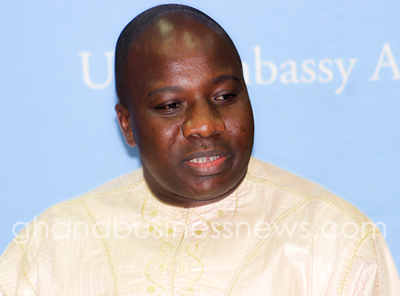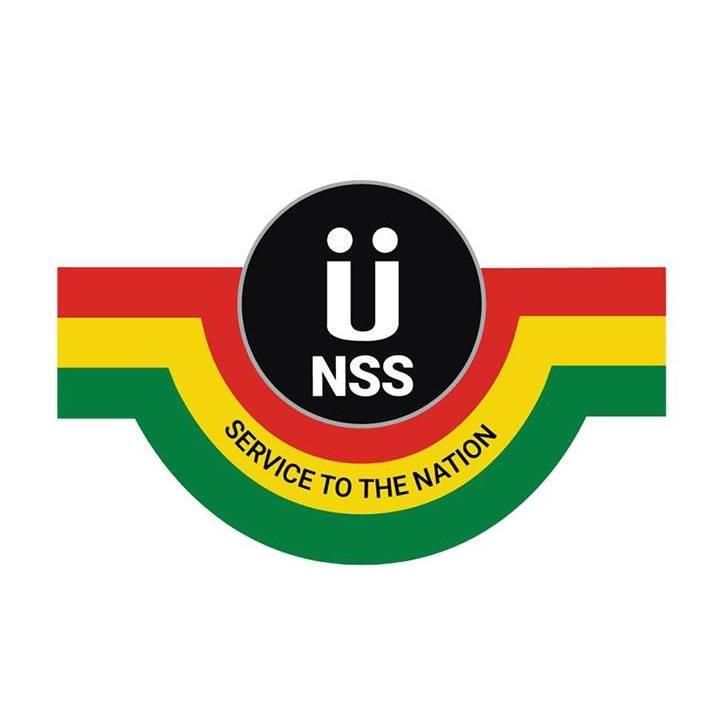
– take simple steps to trigger the right levers and transform your business
The year 2023 is history and in comes a new (leap) year. There is always a sense of anticipation and expectation as we set ourselves up for the weeks and months ahead. In our reflections, we will be ruing some of the shortcomings of the past year and reflecting on what we can do differently going forward to trigger successful outcomes as we begin the journey of a new year. Naturally, as a business, we will be reviewing our performance in key areas (this cycle falls at different times, for the sake of this article I use the December-January transition because of its common significance) and mapping out strategies to clear what hurdles confronted us previously.
Undoubtedly, we will be reflecting on some new initiatives to keep our ship sailing and more importantly to give us the competitive edge we frequently crave. Be that as it may, what is important for now is that we are still in business and have ahead of us a bright future with great opportunities. The challenges in today’s volatile business environment are enormous. We are confronted with a plethora of challenges some outside of our control and others from within. Whatever their nature we must proactively address them with our best efforts and learn all we can to drive ourselves up to heights of success and be prepared to do all we can to sustain it.
Our Customer Experience Strategy will be in focus as we ponder over the past year and set ourselves up for the year 2024. The experiences of the year 2023 present some very useful lessons. At the very least our performance in our experience agenda will indicate to us our state of readiness in executing a CX strategy that aligns seamlessly with our business strategy. The reality for most businesses is that the planning is more skewed toward the needs of the business with little regard for the customer and hence the experience. Even if you have a CX strategy in place note that there is always room for improvement.
Customers are unpredictable. Even more so is the customer experience where customer sentiments weigh more on their emotions than rational judgment. In a recent survey conducted, the following question posed to businesses elicited interesting responses. The following question was posed, “Does your business consciously consider how decisions will affect customer experience?”. In the survey responses, 33% said, yes, 17% responded, no, and 50% responded, sometimes. Only a third of the respondents said yes. Regardless of the popular claim by many businesses that CX is paramount for them the data suggests that this is not necessarily the case.
According to experts, for customer experience to get on the transformation agenda, you need one of two things. A transformational leader or burning platform. By popular acclaim we are informed that transformational leaders do not wait for a burning platform, they start the fire. As CX lead never mind the bumps of 2023, it is now time to start the 2024 fire. Here are a few tips I have learned from some experts on how you can approach this. First, build your authority (inward) and skill (outward). Second, develop a customer experience strategy and be intentional about how you align the rest of the organization to your customer experience.
Third, connect people to your strategy. Ensure that employees, customers, and leadership are aligned. When your employees are happy, they will make your customers happy. Fourth, operationalize your experience strategy by deploying the right tools to make things happen. Fifth, build the capacity to measure your CX interventions effectively. As the saying goes “what cannot be measured cannot be managed”. The capacity to measure your progress in the CX journey from the perspective of the customer to enable you to understand your customers is an essential part of the process. Remember, the proverbial journey of a thousand miles begins with the first step.
Building Your Authority
The customer experience professional operates in three types of authority. To begin with the role may either be formal or informal depending on the make-up of the organization one finds oneself in. experts identify the authority of a CX professional as ranging from positional, borrowed, to earned authority. The first refers to the position you hold in the organization you work for. In most cases with regard to customer experience this position is likely to be lower than an executive position. At this level who is going to listen to you? If you cannot benefit from positional authority you can borrow from someone who has influence e.g. the CEO or a senior manager.
Borrowed authority may not last forever and could fade out for as many reasons. For example, if your borrowed authority leaves the business you will need to depend on earned authority. Use your borrowed authority to develop your earned authority so that when it’s no more (borrowed authority) you can thrive on your earned authority. Be intentional about building your earned authority for the period when your borrowed authority is no more. Years ago I went through a cycle where borrowed authority was my backbone as I navigated my way round the organization I had just entered. My borrowed authority resigned suddenly from the organization.
Subsequently, I had to patiently earn the authority I needed to thrive in the company. It was no mean feat. As CX lead it is important to know a lot about the organization, what other people do and be able to articulate how their roles influence the customer experience. Know thoroughly the customer journey for yourself to ensure that you have an empathetic view of the customer’s journey end to end. Earned authority is about knowing the business inside out. Being acquainted with the beliefs, processes, technology, environment, and data, and learning about what it is like to be a customer, employee, or decision-maker is key to your earned authority.
Strategy
Random experiences are great from the perception of both the customer and the business. Crucially customer experience is about creating these experiences regularly and being intentional about them. Delivering intentional out of world experiences tend to have an emotional effect on the customer who benefits from it. When your service provider sends you a birthday message does it not leave you wondering how cool it is that you are remembered among many other customers. When I was offered groceries for free because of a malfunctioning self-checkout machine over a decade ago it stayed with me for so long I still talk about it today.
Why you need a deliberate strategy is that you want the experience to be intentional. Golding’s evolutionary phases of customer experience highlights the following; Random Experiences where the focus is on task, process, and product with little or no measurement. In this scenario employees are disengaged. The next phase is referred to as Intentional Experiences with a shared vision thrives in an environment where there is cross-functional governance and a measurement programme. In an environment where everyone thinks and acts customer differentiated experiences are noticeable and customers find it easy to do business with you.
Where the customer experience is intentional strategy, people and business are pivotal. There is no right order to address this however the feature here is that customer experience is aligned to the business strategy ensuring that internal processes, functions and so on are developed with the customer in mind. Having an authentic experience strategy is about ensuring that as Golding would say “the decisions you make each day – small or large – would not have been made differently if your customer was standing beside you”. It is about having a clear purpose and striving to stay the course in all your undertakings.
People and Strategy
Jan Carlzon the former SAS Chief Executive states aptly that “If you are not serving the customer, your job is to be serving someone who is”. This underscores the pivotal role of the customer in the business equation. Simon Sinek an English-American author and inspirational speaker adds to this narrative by emphasizing the importance of people. He says “100% of customers are people. 100% of employees are people. If you don’t understand people, you don’t understand business”. What every business must aim at is to be customer-centric. Here is the irony about the customer-centric business. They do not put the customer first, they put employees first.
A business that cares about its people will succeed in its customer experience quest. Regardless of the mode of delivery, whether face-to-face, over the phone, or through the internet all the interactions between the customer and your business are designed and delivered by people. It is imperative that the people who engage the customer feel engaged and empowered. The organization’s culture must be accommodating of its people to send the right signals to customers who will benefit from the services of the organization’s agents whether at the front lines or at the backend of the business.
A negative culture will repel dissatisfied employees who in turn could influence customers negatively. The people must feel welcome within the organization and must attest to a work-life balance. To translate your profile into a customer-centric language here are a few key questions individuals must address. First, who are your customers (internal and external)? Second, what do you do for your customers? Third, what is the balance between internal and external customer interaction? Fourth, what is your role in the end-to-end delivery chain to external customers, i.e. how does your role relate to the purpose of the business? Fifth, how is your performance measured?
Employee experience drives customer experience. We must make it our business to ensure that every contribution counts. If one link in the chain breaks the customer experience will suffer.
Operationalizing CX Strategy
After your business has made great progress in designing and implementing a customer experience strategy that addresses the most important needs of both customers and colleagues you are now left with the question of how you should surprise and delight your customers. There are no easy answers or quick fixes here. A recent report by Tallyfy developers of workflow and process management software, recommends the following approach to inform and guide execution. Your solution must address these key evils, departmental silos, lip service from top management, and resistance to change.
Ensure that staff are engaged and empowered and that there is top management commitment to operationalize exceptional customer experiences. Furthermore, you need to Improve processes and IT systems to ensure that they are not just supporting the customer experience but also providing staff with the tools to serve customers better. Develop a “big picture” view of the experience journey you are seeking to create, in your service design. Draw output from your earlier strategy sessions that created the blueprint, when you looked at company purpose, customer expectations, current state, obstacles, and success criteria.
You then translate that into operational activities, procedural changes, and trigger technology enablement. Using the experience journey map, conduct a thorough gap analysis of any customer pain points and friction that can interrupt a successful contact flow. Your goal is to identify what has worked in the past and what has not that needs changing. It should be highly participatory as you intend to keep most (if not all) of your employees aligned with the customer’s needs. Your journey map must focus on what task you are looking to achieve, your current challenges, the easy of use of your touchpoints, and what the data says.
Measure
I assume that the cliché “What is not measured can’t be managed” is not lost on us. As much as your focus is on measuring your CX, the process can potentially serve several purposes. These include, the health of your business, the capability to define future goals, and to identify better direct business investments. Gartner the global management consulting company recommends a consolidated view of CX measurement so you can easily see where you need to direct your attention. Here are a few of them used commonly which we must pay attention to. They are, Net Promoter Score (NPS) Customer Satisfaction (CSAT), and Customer Effort Score (CES).
Net Promoter Score (NPS) is A core aspect of CX measurement, it helps you identify your most loyal customers, the passive customers who would jump ship for a better deal, and the unhappy customers who bad-mouth your business. It can be used to report on the customer’s whole relationship with your company and help you prevent churn. Customer Satisfaction (CSAT) is another widely used CX metric, CSAT uses surveys and direct questions to gauge what customers think of a product, service delivery, and any other interactions with your organization.
Customer Effort Score (CES) is a metric that helps you understand how easy it is for customers to engage with your business and resolve any issues. It’s a different facet of customer satisfaction, but an important one that gives a strong indication of customer loyalty. Each of the above metrics provides insight into how your customers view your company—but each has its strengths and its niche application. How you integrate the metrics will depend on the kind of business you are in, how you are looking to grow, and the points and CX processes you are aiming to improve upon.
Looking to start the new year on a fresh note? Start by rethinking your Customer Experience Strategy and as you do so note that the journey is all about people internally and externally. A Happy and Prosperous New Year to you as you reignite your CX.
| The Writer is Head of Training Development & Research
Service Excellence Foundation, and Management Consultant (Change and Customer Experience). He can be reached on 059 175 7205, |
The post Stepping up your CX Gear to stay connected with Customers appeared first on The Business & Financial Times.
Read Full Story












![[Video] Heartbroken husband of nurse who burnt to death inconsolable at funeral](https://sportal365images.com/process/smp-images-production/pulse.com.gh/16022025/16d8d3d4-b4c7-49b0-8b05-9608091145c1.jpg)





Facebook
Twitter
Pinterest
Instagram
Google+
YouTube
LinkedIn
RSS